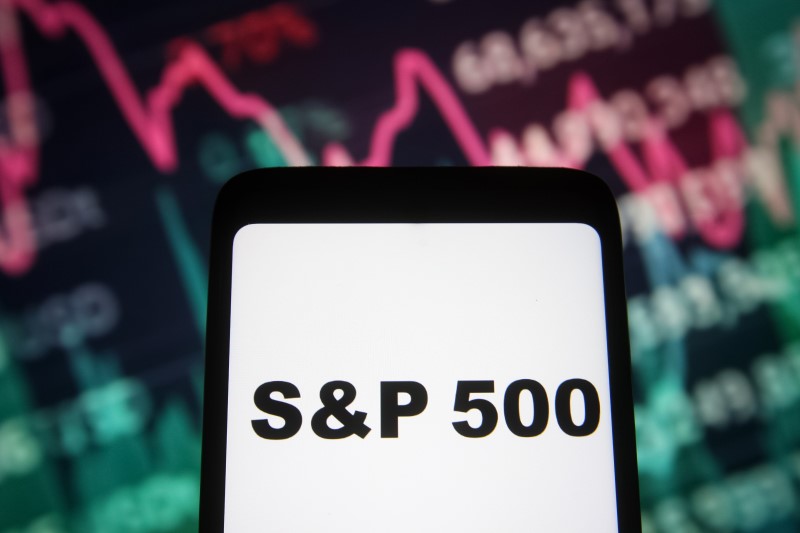Piper Sandler's 'fair value' model shows the S&P 500 is overvalued by 8%
Investing.com -- The S&P 500 is currently overvalued by around 8% according to Piper Sandler's “fair value” model, the investment bank said in a new note.
Specifically, the index is trading at 21.8x forward earnings estimates, which is 1.8 points above the firm’s fair-value estimate of 20x.
Piper Sandler analysts believe the overvaluation is driven by a few key factors, including interest rates, credit spreads, and the composition of the index.
Despite the model’s findings, analysts are not sounding the alarm. They emphasize that "an 8% overvaluation is no reason to get bearish.”
“Stocks can remain at rich valuations as long as a “fear” catalyst doesn’t arise from the usual suspects: interest rates, employment or inflation,” the note adds.
Looking ahead, analysts do not think there is an upside from price-to-earnings (P/Es) at current levels, and have changed their focus to earnings momentum as their “top stock-selection screening tool.”
“Stocks with stronger EPS momentum are more likely to sustain or increase their valuation,” analysts noted.
Piper Sandler's model is based on three primary drivers: interest rates, credit spreads, and the weight of the energy sector in the index, all of which have contributed to higher P/E levels in recent years.
While interest rates have risen, the composition of the S&P 500, which is now heavily tilted toward growth sectors, has dampened the impact of these higher rates on valuations.
“The most consistent macro variable that explains changes in market valuations is credit spreads – this is likely due to the fact that credit spreads can reflect all types of risk, and any time higher risks are a concern, can act as a market-multiple deflator,” analysts explained.
The third factor that helps explain the level of the market’s P/E is the energy sector’s weight. As the energy sector's share of the index decreases, the overall market P/E tends to increase.
The analysts also address market timing and valuation, warning that simply focusing on overvaluation is not an accurate way to predict short-term market movements.
"High P/E doesn’t mean much for forward returns in the short run."
In other words, while valuation plays a role in long-term performance, other factors, such as business cycles, have a more significant impact over time.
Source: Investing.com
